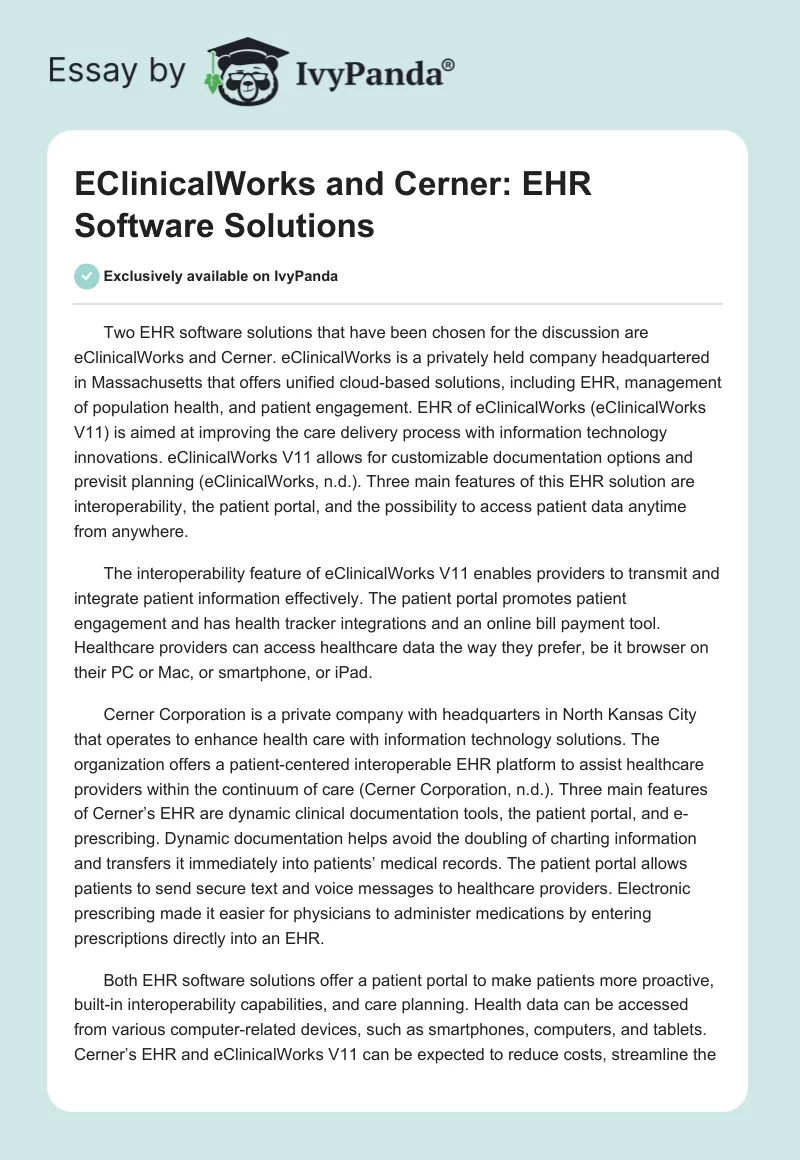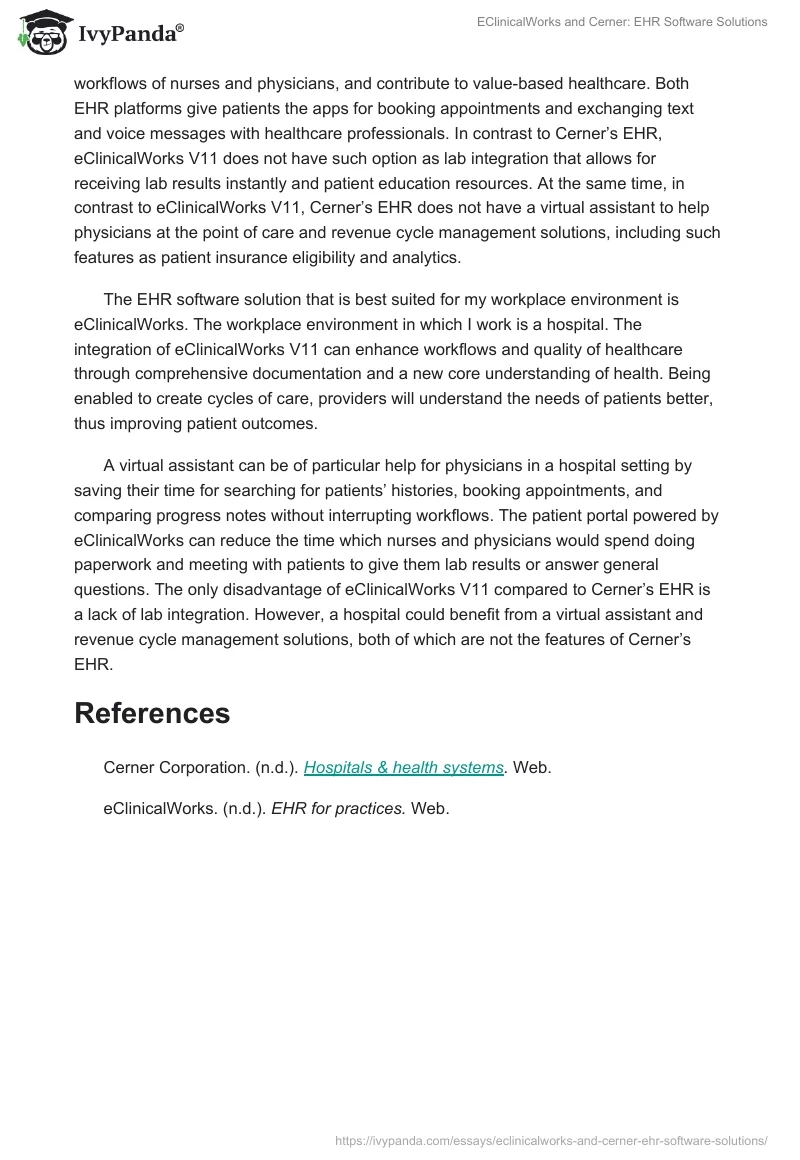Two EHR software solutions that have been chosen for the discussion are eClinicalWorks and Cerner. eClinicalWorks is a privately held company headquartered in Massachusetts that offers unified cloud-based solutions, including EHR, management of population health, and patient engagement. EHR of eClinicalWorks (eClinicalWorks V11) is aimed at improving the care delivery process with information technology innovations. eClinicalWorks V11 allows for customizable documentation options and previsit planning (eClinicalWorks, n.d.). Three main features of this EHR solution are interoperability, the patient portal, and the possibility to access patient data anytime from anywhere.
The interoperability feature of eClinicalWorks V11 enables providers to transmit and integrate patient information effectively. The patient portal promotes patient engagement and has health tracker integrations and an online bill payment tool. Healthcare providers can access healthcare data the way they prefer, be it browser on their PC or Mac, or smartphone, or iPad.
Cerner Corporation is a private company with headquarters in North Kansas City that operates to enhance health care with information technology solutions. The organization offers a patient-centered interoperable EHR platform to assist healthcare providers within the continuum of care (Cerner Corporation, n.d.). Three main features of Cerner’s EHR are dynamic clinical documentation tools, the patient portal, and e-prescribing. Dynamic documentation helps avoid the doubling of charting information and transfers it immediately into patients’ medical records. The patient portal allows patients to send secure text and voice messages to healthcare providers. Electronic prescribing made it easier for physicians to administer medications by entering prescriptions directly into an EHR.
Both EHR software solutions offer a patient portal to make patients more proactive, built-in interoperability capabilities, and care planning. Health data can be accessed from various computer-related devices, such as smartphones, computers, and tablets. Cerner’s EHR and eClinicalWorks V11 can be expected to reduce costs, streamline the workflows of nurses and physicians, and contribute to value-based healthcare. Both EHR platforms give patients the apps for booking appointments and exchanging text and voice messages with healthcare professionals. In contrast to Cerner’s EHR, eClinicalWorks V11 does not have such option as lab integration that allows for receiving lab results instantly and patient education resources. At the same time, in contrast to eClinicalWorks V11, Cerner’s EHR does not have a virtual assistant to help physicians at the point of care and revenue cycle management solutions, including such features as patient insurance eligibility and analytics.
The EHR software solution that is best suited for my workplace environment is eClinicalWorks. The workplace environment in which I work is a hospital. The integration of eClinicalWorks V11 can enhance workflows and quality of healthcare through comprehensive documentation and a new core understanding of health. Being enabled to create cycles of care, providers will understand the needs of patients better, thus improving patient outcomes.
A virtual assistant can be of particular help for physicians in a hospital setting by saving their time for searching for patients’ histories, booking appointments, and comparing progress notes without interrupting workflows. The patient portal powered by eClinicalWorks can reduce the time which nurses and physicians would spend doing paperwork and meeting with patients to give them lab results or answer general questions. The only disadvantage of eClinicalWorks V11 compared to Cerner’s EHR is a lack of lab integration. However, a hospital could benefit from a virtual assistant and revenue cycle management solutions, both of which are not the features of Cerner’s EHR.
References
Cerner Corporation. (n.d.). Hospitals & health systems. Web.
eClinicalWorks. (n.d.). EHR for practices. Web.


